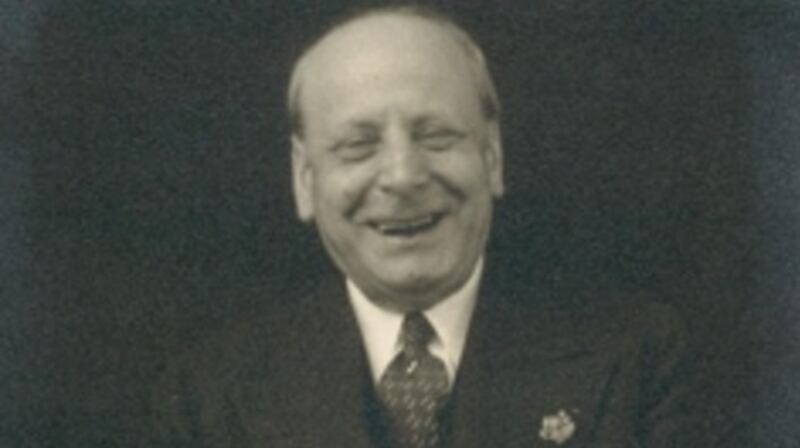Seventy-seven years ago, Mexican muralist Diego Rivera climbed a ladder on San Francisco's Treasure Island. With a paintbrush in one hand and a pistol in each pocket, he was hoping for a thousand dollars a month to paint his epic Pan American Unity for the World's Fair. At the same time he was fleeing Mexico's federales on suspicion of murdering his former friend Leon Trotsky. A hundred thousand onlookers gawked. Polite and unassuming, he climbed down to chat, endearing himself and blowing his deadline by three months.
Subtitled The Marriage Between North and South America, all 1800sq ft of his mural expressed his beliefs. Fascinating and vast, it teems with history from Montezuma to Ford, and features Diego's wife Frida Kahlo and Chaplin acting as Hitler.
“My mural will picture the fusion between the Latin American lands deeply rooted in the soil, and high mechanical developments of the United States.”

Alas, it hangs where few see it, at the community college where I teach. Good news: City College is planning a $200 million state-of-the-art theatre, and after decades of neglect the mural will take pride of place.
* * *
Rivera always said it was Paulette Goddard – Chaplin’s wife – who’d saved his life. She smuggled him out of his studio when police pinned earlier attempts on Trotsky’s life on him (bear with me!)
Goddard hid him under canvases in her station wagon. If you look closely at Pan American Unity you can see this melodrama flitting near Stalin and Mussolini, and Frida in her "Tehuantepec" dress.
Diego and Frida were frequently in ménages à trois. As well as being Diego's house-guest, Trotsky was Frida's lover. So the federales saw Diego as avenging husband, but Frida was more vengeful. Incapable of keeping his pants on, Diego had seduced her sister. Meanwhile Trotsky's assassin was Frida's other ex. Phew.
Diego and Frida’s saviour was a Dublin Jew called “Mickey” Bender, who sold insurance and was celibate. If polyamorousness displeased him, letters show no sign. Bender found a doctor for Frida and got them remarried after they’d divorced!
* * *
Of all bonny bromances in history, the Mexican muralist and elderly Dublin insurance salesman’s was the bonniest. Yet they couldn’t be more different.
Bender never drank and stood five foot tall. Six feet one, Diego hovered at 325 pounds. He liked to get drunk and wave his gun around.
"Next to a revolution or a controversy, nothing puts him in a better mood than a beautiful woman," remarked a 1930 New Yorker profile. Given his hound-dog ways and communist creed, small wonder the jumbo enfant terrible fled north in both 1930 and 1940. Here he caroused and made wealthy friends.
And both times Diego owed his visas, tickets, and commissions to his patron and sidekick, Mickey. A clipping survives of Diego and Frida's first arrival off the train in 1930: "... This jovial, big-jowled paisano, beaming behind an ever-present cigar, his clothes even bulkier than his big frame, a broad-brimmed hat of distinct rural type on curly locks, stepped off a Southern Pacific train yesterday, and Diego Rivera, world-famous mural artist, was here. The Mexican artist quickly proved that he is "un hombre muy agradable."
Standing next to Diego and staring at photographer Ansel Adams with pride and anxiety is his sidekick, Mickey.
So who was Bender? As a patron saint of Californian artists around town, his local nicknames included “Medici” Bender, “Carissimo Albertino”, but usually Mickey.
Once, a letter addressed to “Prince Albert of San Francisco” was delivered to Archbishop Hannah, who forwarded it to Bender after scribbling: “Mickey, must be for you.”
His father was rabbi to Dublin’s Jewish community for 21 years and taught Catholic, Protestant and Jewish children at his Mount Street school, promoting non-sectarian harmony among “three great creeds”.
In 1882, 16 year-old Albert left for San Francisco and his uncle’s office. By 1902, he’d insured Levi Strauss jeans, 1915 World Fair, and Mayor “Sunny Jim” Rolph. By 1930 he’d become a philanthropist, but never lost his accent. California’s most active art buyer and donor bestowed his name on collections from the National Museum’s Bender Room (honouring his mother) and San Francisco’s Museum of Modern Art.
Journalist Gerry Mullins's Dublin Nazi No. 1: The Life of Adolf Mahr elevates the tale of Bender's Kildare Street bequest into a thriller, revealing that museum director Dr Mahr headed the Irish Nazis. Throughout their correspondence, Bender remained ignorant. Afterwards he learned of a cousin in the camps.
Last shout goes to a West Corkman! Longshoreman Peter O’Driscoll guides visitors around Coit Tower, where Rivera’s disciples painted an upstairs mural long closed for controversial Depression scenes.
More surprising: the tour chief is Davy Crockett, distant descendant of his namesake.











